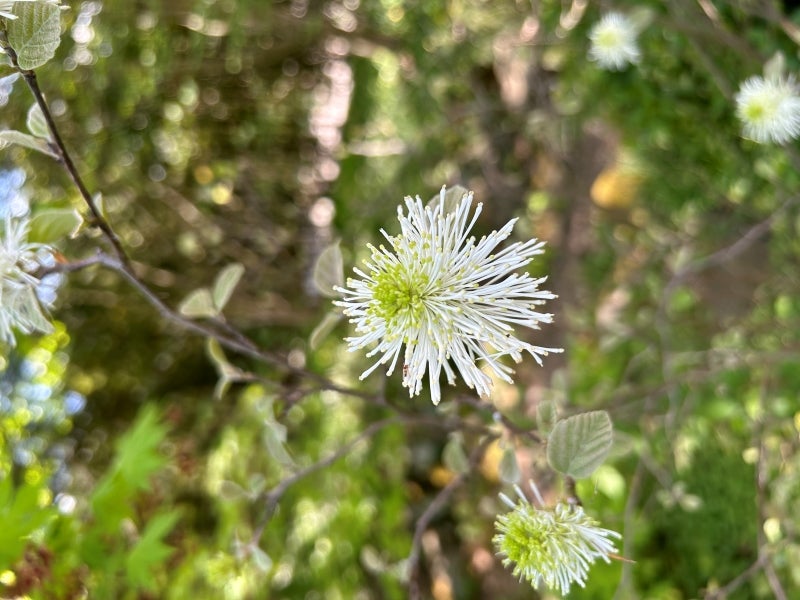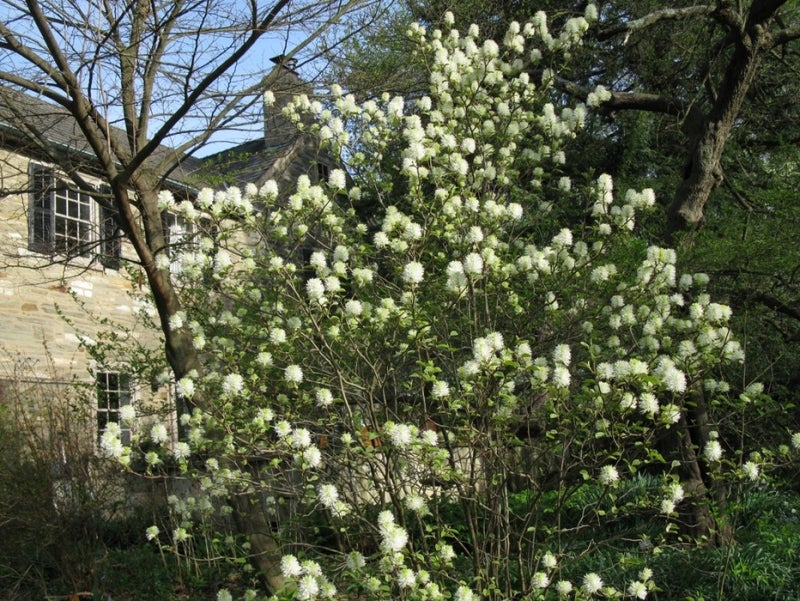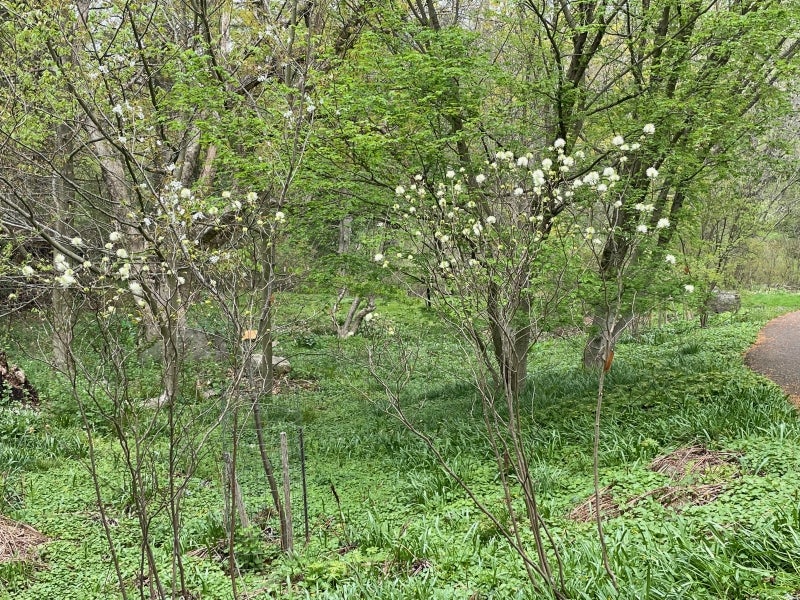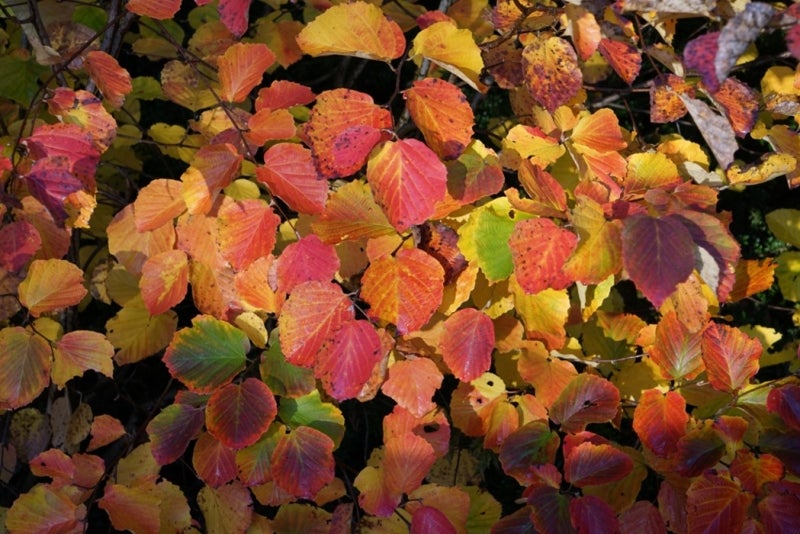Plant Names and Provenance: Fothergilla spp.

Fothergilla spp. are in the witchhazel family, with leaves and fruits similar to those of Hamamelis (witchhazel), but quite different flowers: Hamamelis has colorful petals, while the apetalous (having no petals) fothergilla attracts pollinators with the showy stamens of its male flowers.
Fothergilla is named for Dr. John Fothergill (1712–1780), an English physician with a thriving medical practice subsequent to his fame for writing a book carefully describing serious forms of sore throats, or what we now call diphtheria and scarlet fever. In fact, Fothergill had a strong friendship with Benjamin Franklin, whom he treated when he fell ill on a trip to London as well as supported Franklin’s work in establishing Pennsylvania Hospital by sending seven cases of anatomic drawings and three plaster casts of pregnant women to be used as teaching aids. (These casts can be seen on pre-arranged, guided tours of the historic Pine Building on the Hospital campus.)


Fothergill was strongly influenced by his friendship with the Quaker and London-based merchant Peter Collinson, who promoted the introduction of many American plants into English gardens. Fothergill maintained an extensive botanical garden on his thirty-acre estate in Essex. Linnaeus, the father of modern taxonomy, bestowed the genus name Fothergilla to honor Fothergill, who imported Fothergilla gardenii from America for his Essex garden. (The epithet gardenii honors Alexander Garden, a Scottish- born physician who settled in Charleston, SC in 1752; he discovered F. gardenii for science. His name is also commemorated with the flower genus Gardenia.)

All four species of Fothergilla are native to the southeastern US: Fothergilla gardenii (dwarf fothergilla), F. major (large fothergilla), F. parvifolia, and F. milleri. Fothergilla × intermedia is a cross between F. gardenii and F. major that would not occur in the wild because the two species grow in distinct geographic locations. Fothergilla × intermedia was first noticed at the Arnold Arboretum in 1980; it shows height and leaf size traits intermediate between the two parents, plus it has the advantage of hybrid vigor.

Photo by Nancy Matlack.

Morris Arboretum & Gardens hosts a range of fothergilla including two of the straight species, F. gardenii and F. major; ʻSuzanne,’ a cultivar of F. gardenii; ‘True Dwarf,’ a dwarf form of F. gardenii; and three cultivars of F. × intermedia: ʻBlue Shadow,’ ʻMt. Airy,’ and ʻRed Licorice.’
Visit and enjoy all the spring flowers at the Morris, including the fothergilla, which attract early pollinators with their sweet honey-like smell. The exact locations of all of the fothergilla are mapped on Collection Connection.
Katherine has her Certificate in Botany from the New York Botanical Garden and is a botanical tour guide and freelance writer. You can contact her with comments at botanicaltours.weebly.com.